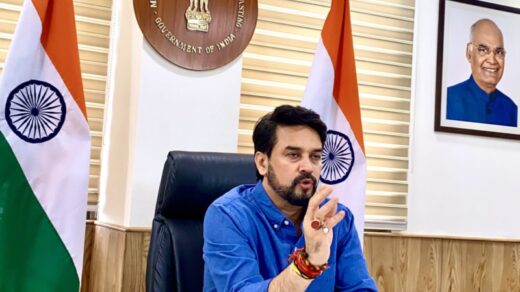The National Electric Mobility Mission Plan (NEMMP) 2020 is a National Mission document providing the vision and the roadmap for the faster adoption of electric vehicles and their manufacturing in the country. As part of the NEMMP 2020, Department of Heavy Industry formulated a Scheme viz. Faster Adoption and Manufacturing of (Hybrid &) Electric Vehicles in India (FAME India) Scheme in the year 2015 to promote manufacturing of electric and hybrid vehicle technology and to ensure sustainable growth of the same.
The Phase-I of this Scheme was initially launched for a period of 2 years, commencing from 1st April 2015, which was subsequently extended from time to time and the last extension was allowed up to 31st March 2019. The 1st Phase of FAME India Scheme was implemented through four focus areas namely (i) Demand Creation, (ii) Technology Platform, (iii) Pilot Project and (iv) Charging Infrastructure. Market creation through demand incentives was aimed at incentivizing all vehicle segments i.e. 2-Wheelers, 3-Wheelers Auto, Passenger 4-Wheeler vehicles, Light Commercial Vehicles and Buses.
The demand incentive was available to buyers of xEV in the form of an upfront reduced purchase price to enable wider adoption. Also, grants were sanctioned for specific projects under Pilot Projects, R&D/Technology Development and Public Charging Infrastructure components under the scheme. In the 1stphase of scheme, about 2.78 lakh xEVs were supported with a total demand incentives of Rs. 343 Crore [Approx]. In addition, 465 buses were sanctioned to various cities/states under this scheme. The details of funds earmarked and utilized under Phase-I of FAME India Scheme is tabulated below:
| S. No. | Financial Year | Fund Allocated | Fund Utilization |
| 1 | 2015-16 | Rs. 75 Crore | Rs. 75 Crore |
| 2 | 2016-17 | Rs. 144 Crore | Rs. 144 Crore |
| 3 | 2017-18 | Rs. 165 Crore | Rs. 165 Crore |
| 4 | 2018-19 | Rs. 145 Crore | Rs.145 Crore |
| TOTAL | Rs. 529 Crore | Rs. 529 Crore | |
The evaluation of Phase-I of FAME Scheme was done by an independent consultant. The main findings of the validation of outcome report as submitted by consultant are given below:
- During the last 2 years, the agenda of clean mobility has been placed front and center in all discussions. The relatively increased awareness, is in itself a notable achievement
- Overall outcomes of key parameters of Fuel saving and CO2 reduction are significantly below the target for FAME;
- Industry players have been cautious about developing capabilities – players have chosen to operate adjacent to their core capabilities
- Subsidy structure needs to be revised based on the powertrain technology (to incentivize cleaner technologies) and to establish parity across technologies
- Overall phased implementation plan has taken off but at the very slow pace, demonstrated limited progress in the first phase. The next phase of scheme extension should focus on a clear catch-up plan
- Benefits from unaccounted segments like e-3W and e-rickshaws can potentially add to the results, however growth in segments like e-rickshaws was unplanned. Support to these segments to be evaluated.
Under FAME Scheme Phase-I, the demand incentive amount was determined for each category (vehicle – technology – battery type) taking into account the principles of Total Cost of Ownership (TCO), Pay-back Period on account of fuel savings, cost of maintenance etc.
Based on the experience gained during Phase 1 of FAME Scheme and suggestions of various stakeholders including industry associations, the Department of Heavy Industry notified Phase-II of the Scheme, vide S.O. 1300 dated 8th March 2019, with the approval of Cabinet with an outlay of Rs. 10,000 Crore for a period of 3 years commencing from 1st April 2019. The details of the scheme is available in
Department’s website (www.dhi.nic.in).
This information was given by the Minister of Heavy Industries & Public Enterprises, Arvind Ganpat Sawant, in a written reply in the Lok Sabha today.
***











